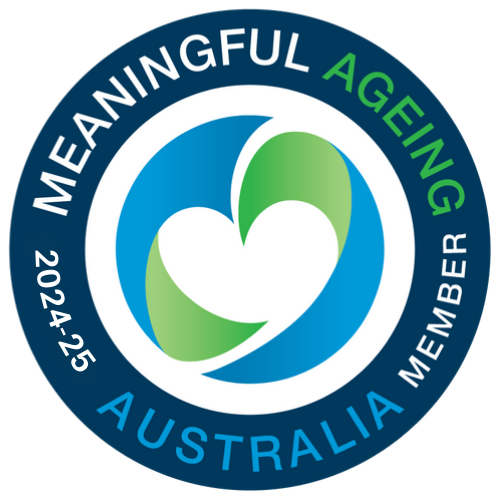As we age, our body systems mature and require exercise to perform effectively. However, exercise tolerance reduces with age as older adults cannot work as effectively as younger people.
To avoid susceptibility to severe medical conditions at old age, it’s ideal to adopt good exercise patterns in the early stage of life. This is vital for good health as we age.
Thorough clinical examinations should be completed before implementing any exercise for older adults and necessary to properly evaluate exercise limitations for older adults.
One of the effects of long-term exercise on aging is that it lowers the risk of age-related conditions. Here, we’ll talk about some simple exercises and the effects of exercise on aging.
Exercises that Aids Overall Health with Aging
Choice of physical activity or type of exercise influences aging. Therefore, it’s necessary to have an individualized exercise plan designed and tailored to your health needs and level of adherence to exercise.
There is a variety of exercises to aid aging gracefully. Thus, below are a few exercises for old people that can be done at home with minimal help and equipment:
1. Walking:
Walking is a powerful ageing exercise capable of slowing the ageing process. It comes with the benefit of lowering blood pressure. Walking reduces the risk of chronic diseases such as diabetes, heart failure etc.
Walking is ideal to reverse the effects of sitting on adults. Regular walking enhances mood, reduces depression, and burns excess body calories,, thus, maintaining good posture and gait.
If you are a 40-year-old or above seeking to look younger, walk more and sit less.
2. Resistance exercise:
The benefits of increased resistance exercise in older adults improve muscle strength, endurance level, fitness, etc. The advantage of increased activity in the early stage of life is evident only after a long time, especially in old age. You don’t have to sign up for a gym membership to carry out strength training.
Resistance bands can be used as part of this exercise. They’re a great way to add some variation to any workout. They’re especially useful for older people because they’re good for increasing strength and flexibility, which is important as we age. Many older people lose flexibility due to arthritis, poor posture, or other issues that make it difficult to move freely. Resistance bands can help these people regain their range of motion because it helps them stretch in different ways.
They are also easy to use and can be taken anywhere. They do not require a lot of space or equipment, so they can be used on the go.
Constant involvement in indoor or outdoor activities that require you to move your limbs against resistance can help, such as lifting.
Putting up with this type of exercise can be challenging; to keep fit, you have to be consistent. Following your customised exercise plan can help increase your activity level. Carrying out resistance exercises have a lot of benefits on ageing. It maintains muscle strength and improves mobility.
3. Taking the stairs:
Walking upstairs is one of the easiest exercises and most effective in preventing the effects of aging, such as cardiovascular disorder. This exercise can be carried out consciously or subconsciously in your home. The benefits of Regular climbing of the stairs are; that it helps build your leg power and muscle rigidity, reduces the risk of falls in the elderly, enhances lung function, improves blood circulation, and lowers the risk of age-related diseases.
A Thorough physical evaluation can help determine the appropriate activity level for your client, you can predict whether the client has the strength and endurance to participate in any of the above-listed exercises.
It’s important to note that these exercises can’t reverse the aging process. They can only lower the risks that come with it.
Benefits of Exercise on Aging.
Individuals who have an inactive lifestyle are at risk for early body dysfunction due to aging.
Regular exercise has a lot of benefits on the body systems, including the musculoskeletal system, respiratory system, cardiovascular system, etc.
Benefits of exercise on aging include:
- Exercise helps reduce the risk of musculoskeletal disorders in older adults such as fractures, joint dislocation, sprains etc.
- Older people experience a significant decrease in muscular strength, and agility when they do not maintain a moderate amount of physical activity. Regular exercise can help reverse these effects.
- Regular aging exercise helps increase the body’s calcium level and joint mobility, hence, reducing stiffness and pain in the joints, a major complaint in the elderly.
Other health benefits of exercise for older adults include:
- Diabetes management
- Flexibility
- Cardiovascular fitness
- Good posture
- Gait and balance
- Reduction in falls
- Improved memory
- Mood stabilization
- Reduction in obesity
- Diabetes management.
Exercise and aging are an excellent combination because regular exercise throughout life can significantly slow down aging. Aside from lowering the risks of diseases in older people, exercise has been proven to improve the cognitive and mental health function of the elderly.
References:
The benefits of physical activity for older adults. (n.d.). Homecare, Care at Home & Home Health Care Services Dublin |. https://www.beindependenthomecare.ie/physical-activities-for-older-adults/
Hongu, N., Shimada, M., Miyake, R., Nakajima, Y., Nakajima, I., & Yoshitake, Y. (2019). Promoting stair climbing as an exercise routine among healthy older adults attending a community-based physical activity program. Sports, 7(1), 23. https://doi.org/10.3390/sports7010023
Physical activity in long term musculoskeletal conditions. (n.d.). Physiopedia. https://www.physio-pedia.com/Physical_Activity_in_Long_Term_Musculoskeletal_Conditions
Ageing – muscles bones and joints. (n.d.). Better Health Channel – Better Health Channel. https://www.betterhealth.vic.gov.au/health/conditionsandtreatments/ageing-muscles-bones-and-joints
Aging changes in the bones – muscles – joints. (n.d.). MedlinePlus – Health Information from the National Library of Medicine. https://medlineplus.gov/ency/article/004015.htm
7 great reasons why exercise matters. (2019, May 11). Mayo Clinic. https://www.mayoclinic.org/healthy-lifestyle/fitness/in-depth/exercise/art-20048389
Valenti, G., Bonomi, A. G., & Westerterp, K. R. (2016). Walking as a contributor to physical activity in healthy older adults: 2 week longitudinal study using Accelerometry and the doubly labeled water method. JMIR mHealth and uHealth, 4(2), e56. https://doi.org/10.2196/mhealth.5445
Walking – the benefits for older people. (n.d.). Better Health Channel – Better Health Channel. https://www.betterhealth.vic.gov.au/health/healthyliving/Walking-the-benefits-for-older-people








